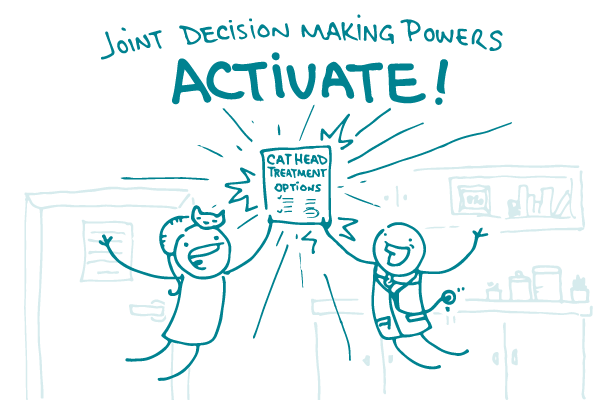
The decisions we make as part of health care — like which treatment to try, or whether to have a certain test — are very personal. Yet recent studies show that doctors make most decisions about patients’ health care, not patients themselves. Hmm.
That’s why we’re talking about shared decision making this week — and (you guessed it) how health literacy fits into the mix.
The idea behind shared decision making is that the patient’s opinion is just as important as the doctor’s. Specifically, shared decision making holds that:
- Patients are the experts about their bodies
- Doctors and patients should discuss options together, including the risks and benefits
- Patients’ preferences, beliefs, and values must be part of the equation
Shared decision making only works when patients understand the choices available to them. That’s why we ❤︎ decision aids — tools that explain the options as well as the benefits, risks, and costs. Some decision aids are web-based tools, while others are printable handouts.
This will come as no surprise, dear readers, but creating decision aids that are written and designed with your audience in mind can go a long way toward supporting shared decision making.
Here are a few particulars to keep in mind when you’re creating a decision aid:
- Write in a conversational tone
- Support your content with graphics (consider mainly visual tools for people with very limited literacy skills)
- Translate content into patients’ languages
- Test, test, test — even if informally — with your audience
The bottom line: It’s best when patients and doctors are partners in health care — and plain language decision aids can help make that happen.
Browse recent posts